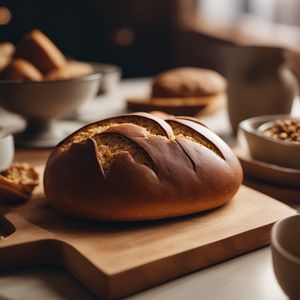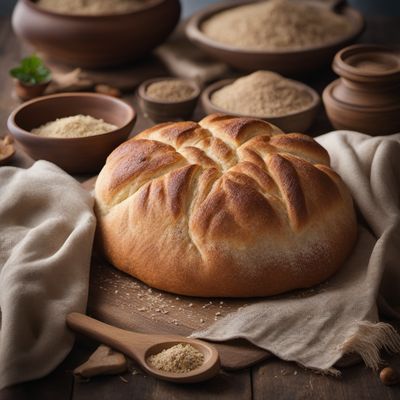
Dish
Bread
Bread can be enjoyed on its own or used as a base for sandwiches, toast, or croutons. It is a versatile food that can be customized to meet a variety of dietary needs and preferences.
Origins and history
The origins of bread can be traced back to ancient Egypt, where it was first made using wild yeast and grain. Over time, bread became a staple food in many cultures around the world and was often used as a form of currency.
Dietary considerations
Bread can be high in carbohydrates and gluten, which may not be suitable for those with dietary restrictions or health concerns. However, there are many gluten-free and low-carb bread options available.
Variations
There are many variations of bread, with different types of flour, yeast, and baking methods used depending on the region or occasion. Some popular types of bread include sourdough, baguette, and pita.
Presentation and garnishing
Bread can be presented in a variety of ways, depending on the shape and size of the loaf. It can be sliced, torn, or served whole. Garnishes such as herbs or seeds may be used to add flavor and texture to the bread.
Tips & Tricks
To make bread at home, try experimenting with different types of flour and yeast to create your own customized version. Use fresh ingredients and follow the recipe carefully to ensure the best results.
Side-dishes
Bread can be served with a variety of toppings such as butter, jam, or honey. It is also commonly used as a base for sandwiches or toast.
Drink pairings
Bread pairs well with a variety of drinks such as coffee, tea, or wine. Some popular options include espresso, chai, or red wine.
Delicious Bread recipes
More dishes from this category... Browse all »

Acorn Bread
Native American cuisine

Alkubus
Moroccan cuisine

Almojábana
Colombian cuisine

Anadama Bread
American cuisine

Antiguan Butter Bread
Antiguan cuisine

Baati
Indian cuisine

Babà rustico
Italian cuisine

Baguette
French cuisine





